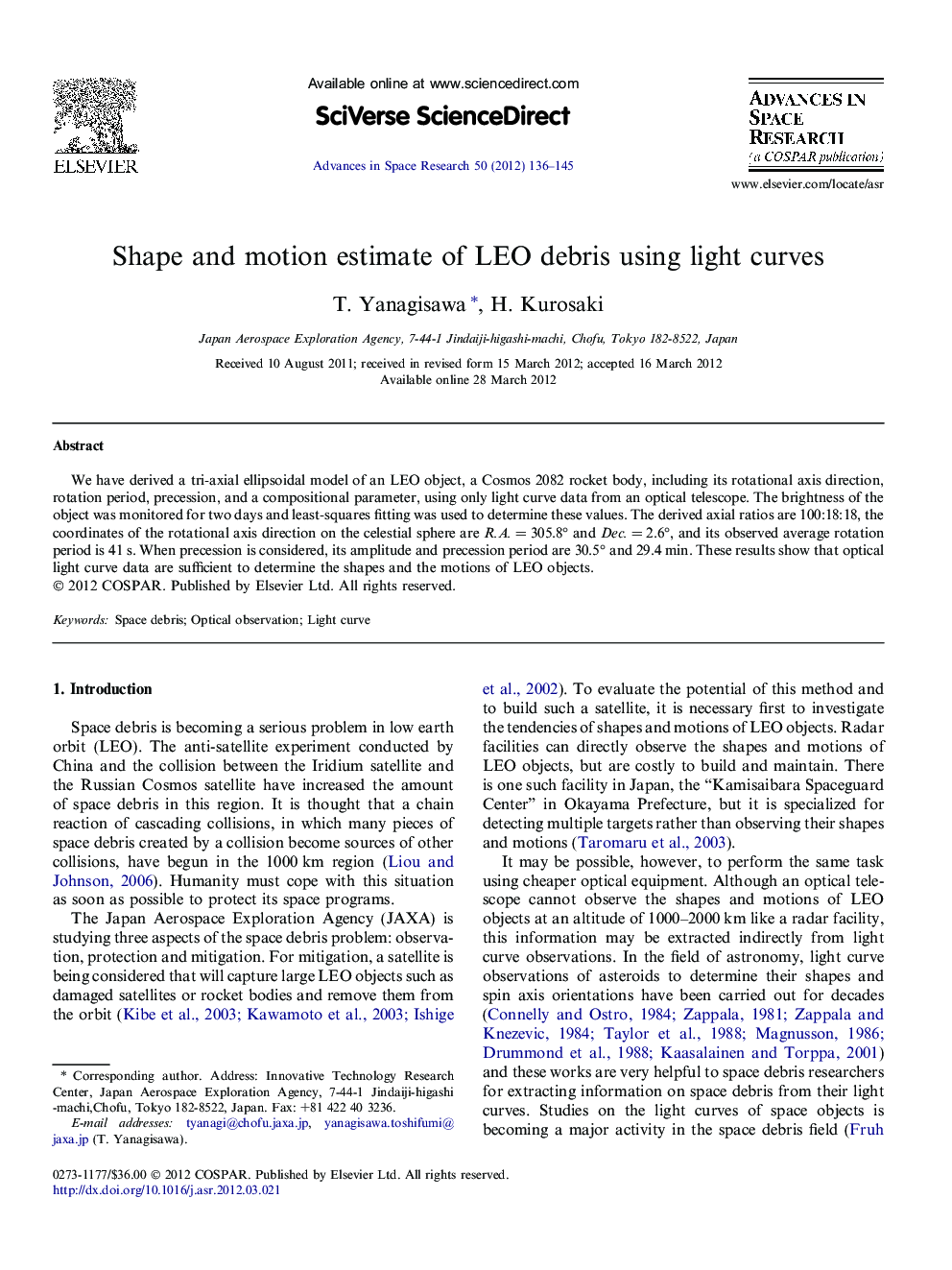| کد مقاله | کد نشریه | سال انتشار | مقاله انگلیسی | نسخه تمام متن |
|---|---|---|---|---|
| 1765963 | 1020128 | 2012 | 10 صفحه PDF | دانلود رایگان |

We have derived a tri-axial ellipsoidal model of an LEO object, a Cosmos 2082 rocket body, including its rotational axis direction, rotation period, precession, and a compositional parameter, using only light curve data from an optical telescope. The brightness of the object was monitored for two days and least-squares fitting was used to determine these values. The derived axial ratios are 100:18:18, the coordinates of the rotational axis direction on the celestial sphere are R.A. = 305.8° and Dec. = 2.6°, and its observed average rotation period is 41 s. When precession is considered, its amplitude and precession period are 30.5° and 29.4 min. These results show that optical light curve data are sufficient to determine the shapes and the motions of LEO objects.
Journal: Advances in Space Research - Volume 50, Issue 1, 1 July 2012, Pages 136–145